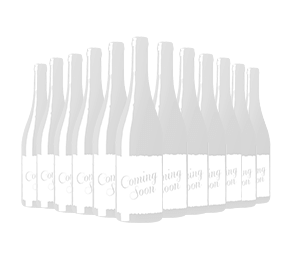Chat with Vinny
“Body” is a term that is regularly used when describing wine. It appears on wine labels and tasting notes and is frequently mentioned in wine recommendations. Wines are typically labelled as light-bodied or full-bodied. But what does “body” actually mean, and how can it help you choose a wine that you’ll love?
What does wine body mean?
When we talk about a wine’s body, we’re describing the weight or thickness of the wine. When you take a mouthful, does the wine feel light and fresh, (light-bodied) or does it feel richer and more substantial (full-bodied)? A medium-bodied wine would have a feel somewhere in between.
The body of a wine is one of the elements that make up its overall mouthfeel, along with factors such as tannins, sweetness and acidity.
Wines can range from light-bodied to full-bodied, and the body of a wine can impact its overall character, intensity of flavour and mouthfeel. This applies to all wines, including red, white, rosé and sparkling.

Why is understanding wine body important?
Knowing whether you enjoy light, medium or full-bodied wines can help guide your choices when purchasing or ordering wine. Some people might enjoy a Pinot Grigio’s light, delicate nature, for example, while others might prefer the full, rich quality of a Chardonnay.
If you know a wine is full-bodied, you’ll expect it to have a certain weight and richness in the mouth and not be surprised or disappointed if it doesn’t have the light, refreshing qualities of a light-bodied wine, for example.
It also plays a significant role in food pairing. Generally, light-bodied wines tend to pair better with lighter dishes, while full-bodied wines can stand up to heavier, more intense flavours.
What factors contribute to wine body?
Several factors contribute to a wine’s body, the most prominent being its alcohol content, residual sugar and tannin levels.
Wines with higher alcohol content tend to have a fuller body because alcohol has a more viscous texture than water, contributing to the sensation of weight or fullness on the palate.
Residual sugar can also add to the body, as sweeter wines often feel denser and richer. Tannins (compounds naturally found in grape skins, seeds and stems) play a crucial role in red wines. Higher tannin levels add a sense of weight and structure.
The grape variety, winemaking process, and region can also significantly influence a wine’s body.
What is light-bodied wine?
Light-bodied wines have a lighter weight and feel in the mouth. These wines often have a lower alcohol content (often less than 12.5%) and typically lack the high tannin levels that give red wine a heavier, more robust feel.
Light-bodied wines can be both red and white. Pinot Grigio and Vinho Verde are light-bodied white wines, while light-bodied reds include varieties such as Pinot Noir and Gamay. These wines are often described as refreshing and easy to drink, perfect for warm weather or as an aperitif.
Many light-bodied white wines are dry and crisp with a bright acidity. They pair well with lighter dishes, such as delicate seafood, freshly made salads or subtly flavoured chicken dishes. These wines can provide a refreshing counterpoint to the food, enhancing both flavours.

What is medium-bodied wine?
Medium-bodied wines fall between light-bodied and full-bodied wines in terms of weight and richness on the palate. They are often characterised by a balance of fruit, acidity and tannins with a typical alcohol content between 12.5% and 13.5%.
These wines can be either red or white, and they often offer more complexity than light-bodied wines but are not as heavy or rich as full-bodied wines.
Merlot is a medium-bodied red wine known for its fruity flavours of plums and cherries, with hints of chocolate and herbs. Sauvignon Blanc is an excellent example of a medium-bodied white wine. It has a bright acidity and flavours ranging from tangy citrus to lush tropical fruits, depending on where the grapes are grown.
Medium-bodied wines strike a balance between delicacy and robustness. They are versatile and can pair well with various dishes, from meats such as pork or veal to grilled vegetables or moderately spiced dishes.
What is full-bodied wine?
Full-bodied wines are those that feel heavier, richer and more substantial in the mouth. They typically have a higher alcohol content, often above 13.5%, and can also have higher levels of tannins or residual sugars, adding to their weight and complexity.
Full-bodied wines can be both red and white. Examples of full-bodied red wines include Cabernet Sauvignon, Syrah and Malbec, while Chardonnay (oaked) and Viognier are examples of full-bodied white wines. These wines often offer a balance of intense flavours and can pair well with hearty, flavourful dishes.

Rosé wines and body
Just like their red and white counterparts, rosé wines generally vary in body from light to medium, though rosé wines can occasionally also be full-bodied, especially those made from grapes with more intense flavours or made in a style that emphasises richness.
Light-bodied rosé wines are typically pale in colour, with refreshing acidity and delicate flavours of citrus, melon and flowers. They have a light, crisper feel on the palate, similar to a light-bodied white wine. Light-bodied rosé wines from the Provence region of France are known for their dry, crisp and subtle flavours.
Medium-bodied rosé wines, on the other hand, have a slightly richer texture and more pronounced flavours. These wines often show notes of ripe strawberries and raspberries and even hints of earthiness or spice. These rosés straddle the line between a white wine’s freshness and a red wine’s structure. Many Spanish rosados fall into this category.
Discover our full range of wines and find the perfect bottle to suit your tastes and budget.
About the author
Chris Larkin
A seasoned copywriter with over two decades experience, Chris has been part of the team since 2021. At Laithwaites HQ, you’ll find him either working on our latest catalogue or creating informative content for our website. Qualified to WSET Level 3 Wine, Chris is as geeky about wine as he is about copywriting. But when it comes to choosing a special bottle, he is a traditionalist, and loves a good Bordeaux or Mâcon Chardonnay.

